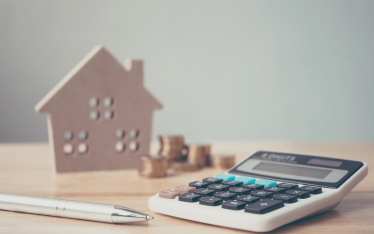Australians are extremely fortunate to reside in a beautiful, free country abundant with opportunity, however these opportunities come at a cost. It is the Australian dream to own your own home, multiple cars, a family trip to Bali or early retirement, resulting in many Australians finding themselves in debt.
Falling into debt can be one of the easiest mistakes many Australians make. Getting out of debt and paying off multiple debts can be a difficult task especially when things don’t always go to plan, like losing your job, falling ill or losing a loved one.
It is important to remember that it is never too late the start a Debt Management Plan to achieve financial freedom.
Think Big Money offers tailored strategies and coaching solutions that are designed to turn your life around and take control of your future because your finances are big thing.
Paying Off Multiple Debts
There are many ways you can find yourself in debt, from spending a little more than planned to buying your home or an emergency. So, what are some of the ways to pay off multiple debts?
The First Step to Paying Off Multiple Debt is to Establish a Budget – sign up to the 33 Day CashMaster Free Trial and evaluate your current situation by linking all your bank accounts (this will show your income sources and expenses associated with the respective accounts), credit cards (this will link all expenses paid via credit card) and loans (this will show your loan balances, past repayments and future repayments).
If you put money towards eliminating your debt without knowing how much surplus income you have, you may result in leaving yourself short for the week to buy your groceries or pay your bills, so you use your credit card. This results in the vicious debt cycle and outlines the importance of using a budgeting tool like CashMaster provides you a clear picture of your current situation so you can make informed decisions about your financial future. If you are spending more than you earn go through your regular expenses and see what you can cut out and where you can reduce your spending.
You should now have a good understanding of your finances and you can see how much surplus cashflow you have to allocate to reducing and eliminating your debt, and how long it will take. Finally, put a debt repayment plan into place to repay your debt.
Option 1: Minimum Repayments
Multiple debts usually put us in a position where we make minimum repayments. When making debt repayments you should ensure that you at least make minimum repayments each week, fortnight or month until the debt is repaid.
Making minimum debt repayments in considered the most time consuming and expensive method to eliminate multiple debts.
For instance, say you have a $3,000 credit card debt that is charging you 16% interest.
If you only made the minimum monthly repayment of $60, it would take you 7 years to repay this debt and you would also pay $1,977 in interest. However, if you paid $120 per month you could repay this credit card debt in 2 years and 8 month and you would only incur interest costs of $674.
Option 2: Pay Off the Most Expensive Debt First
When repaying multiple debts, it can be difficult to set aside more than the minimum amount for each of your debts. An alternative strategy is to start with the largest debt and the highest interest rate as this will save you money over time.
Step 1: Select the highest debt amount with the highest interest rate.
Step 2: Make minimum repayments on all other debts as per due date.
Step 3: Use any surplus cashflow to pay off more of your debt with the highest interest rate.
Step 4: Continue until all debts are repaid, replacing the debt with the highest interest rate as they are repaid and cleared.
Option 3: Pay Off the Smallest Debt First
If your concern isn’t the amount of debt, but it’s the number of debts you will benefit from focusing repayments on the smallest debt first to simplify the number of repayments you are making.
For instance, you may have 2 Credit Cards with $2,000 and $4,000 balances. Repaying $1,000 of each may not feel as rewarding as eliminating the $2,000 Credit Card and eliminating that debt.








